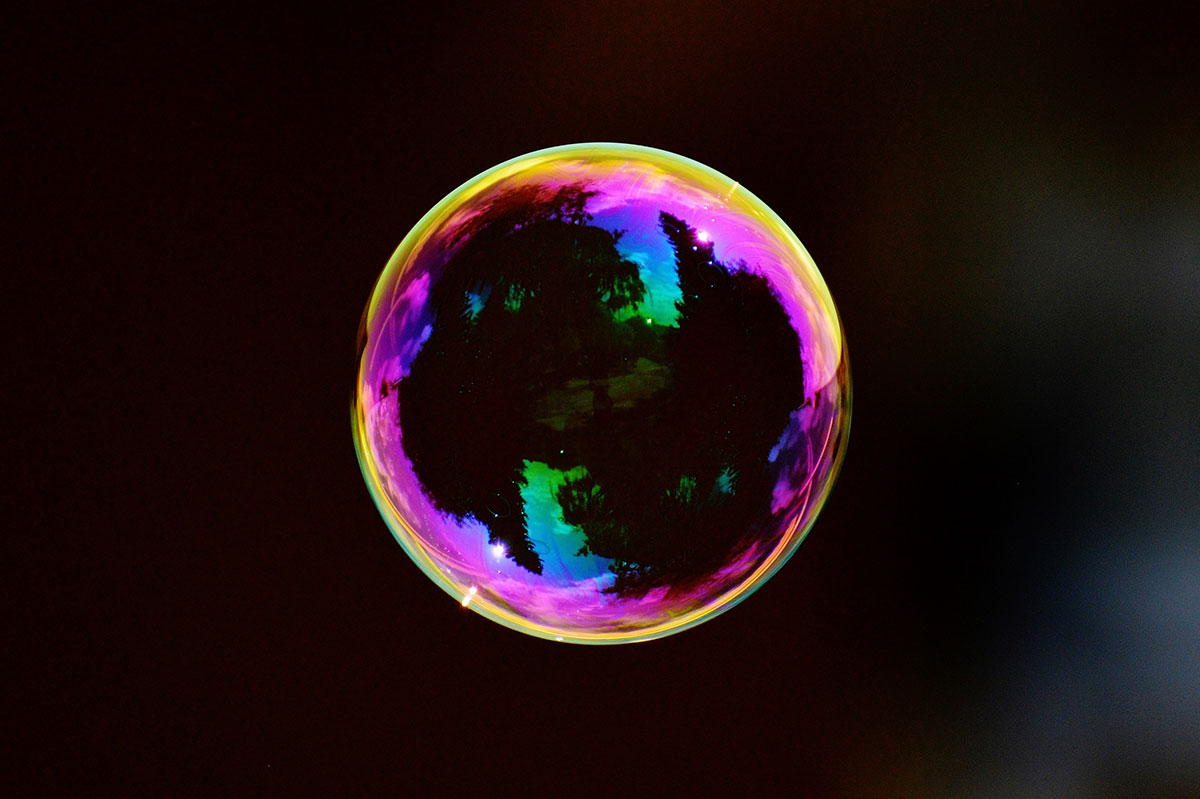Anti-Reflective vs. Anti-Glare Coatings: What’s the Difference?
Once upon a time, eyeglasses were just clunky cuts of glass. They improved vision but couldn’t handle reflections very well.
Today, most lenses come with an ‘anti-reflective’ or ‘anti-glare coating’ to help improve optical clarity.
From a customer perspective, there’s usually not much difference between an ‘anti glare’ and ‘anti reflective’ coating. An eyeglass company that offers either one will usually cover all the important bases. However, there are some subtle differences in how these coatings can function – explained below!
What is an anti-reflective coating?
Simple! An anti-reflective coating reduces the amount of reflective light on eyeglasses.
When you talk to someone wearing their eyeglasses in a well-lit place, you’ll notice that their eyeglasses reflect some of the light, obscuring their eyes.
With an anti-reflective coating, you can see through their eyeglasses more clearly. Not only can you make better eye contact with each other, the wearer can see more clearly – with fewer distracting lighting effects!
An anti-reflective coating can be only about 0.2 microns thick, almost as thin as a soap bubble!
This coating is not the same as a smartphone or computer screen protector, which is pasted on the surface by hand. Instead, the eyeglasses are placed in a vacuum chamber and exposed to a metal oxide that bakes the AR coating on the surface.
In other words, the coating becomes one with the eyeglasses.
Such coatings can differ depending on the manufacturer of the lenses. For example, Essilor uses a Crizal Sapphire coating that helps to reduce visible light reflections from 360° – all ensuring the lenses have absolute transparency.
So – what is an anti-glare coating on glasses?
Some eyewear companies will talk about both anti-glare or anti-reflective coatings. Some will use either term interchangeably – or may talk about them as separate things.
At the end of the day though, an anti-glare coating essentially does the same thing as an anti-reflective coating.
If you want to dig very deep – the distinction is usually that anti-reflective coatings can protect against both internal and external light.
In contrast – anti glare coatings deal only against external light sources entering the glasses.
How does light reflect off different surfaces?
All physical objects, shiny or not, reflect a certain amount of light.
Even non-shiny surfaces reflect light. You can see the world around you because the light reflected off objects and surfaces, no matter how little, enters your eyes.
Things that don’t reflect light or only reflect very little amount of light, such as air or clear water, tend to be translucent.
There’s a thing called “interference” that may also affect how light is reflected off a surface (or how your eyes see). This occurs when light beams from two opposite directions cross paths.
The best example is the light reflection on a soap bubble. The swirling cloud of different colors you see on its surface results from light interference.
When the light passing through the bubble’s outer surface interferes with the light reflected by its inner surface, you see an explosion of colors.
While thicker than a bubble, your eyeglasses experience the same phenomenon. Light is reflected both by their interior and exterior surfaces.
Eyeglasses with no anti-reflective coating reflect about 8% of the light it receives, meaning only 92 percent of it makes it into your eyes. This can lead to a decrease in visual clarity.
Benefits of anti-reflective and anti-glare coatings
When an anti-reflective or anti-glare layer is added to a lens, only a very small percentage of the light is reflected.
Anti-reflective coating also increases contrast, making colors more vivid and crisp. Without it, the images you see are paler and fuzzier. And who wants that?
Both coatings improve the clarity of the wearer’s vision and reduce reflectivity.
Here are some applications of these amazing optical technologies:
- Better optical clarity for the glasses’ wearer.
- Reduces distracting glare that can cause eyestrain and headaches.
- When conversing with another person—a client or an interviewer—your eyes are more visible to them, which is critical in establishing trust.
- The anti-glare coating may also disperse excess light that might otherwise hurt your eyes.
- It’s easier to do things like drive.
- Look better on camera since wearing glasses without anti-reflective coatings will reflect your ring light.
How to tell if your eyeglasses have AR or AG coatings
Keep in mind that the purpose of protective coatings is to manipulate light reflection. Therefore, some of its properties also tend to change. The most noticeable tends to be a change in the reflection’s color.
Eyeglasses without these coatings will have a white, regular reflection, while those with an anti-reflective coating can sometimes reflect a greenish-purple reflection. The lenses can sometimes also appear slightly darker because of the additional layer.
What other lens coatings are there out there?
Any good optical lens manufacturer will add on some forms of coatings to eyeglasses to help make it easier for the wearer to look after these glasses out in the wider world.
Here at Mouqy, our glasses include scratch resistant coatings for added durability, and hydrophobic coatings. Read up more on our lenses here.
Hydrophobic coatings are also very helpful for keeping your lenses cleaner for longer, and reducing the smudge marks left from fingerprints. Moisture from your skin will quickly come off should you accidentally touch it.
That’s not to say you don’t have to clean your glasses regularly to prolong their lives!
Wrap-up: Lens coatings can make all the difference
Anti-reflective and anti-glare coatings are just two of the latest advances in optical technology. As we discover new ways to harness and manipulate light, we can expect more visual correction solutions in the future.
Taking advantage of available options is also critical as they help improve visual clarity. Anti-reflective and anti-glare coatings are worth trying to have a high-contrast and clearer image of the world.
If you’re still using standard non-coated eyeglasses, this might be the best time to get a new pair.

Written by:
Rodman Papros












